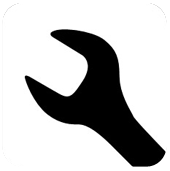什麼是開放資料?¶
This handbook is about open data but what exactly is it? In particular what makes open data open, and what sorts of data are we talking about?
什麼是開放?¶
This handbook is about open data - but what exactly is open data? For our purposes, open data is as defined by the Open Definition:
開放資料指的是資料可以被任何人自由使用,重複使用和散佈 - 在其限制上,最多我們只能要求使用者標示資料來源與所有人。
The full Open Definition gives precise details as to what this means. To summarize the most important:
- Availability and Access: the data must be available as a whole and at no more than a reasonable reproduction cost, preferably by downloading over the internet. The data must also be available in a convenient and modifiable form.
- 重複使用與散佈: 資料必須使用允許重複使用和散佈並包含可以與其他資料集混和使用的授權聲明。
- **Universal Participation/普及的參與**:任何人都能自由使用,重複使用和散佈。所以就不能禁止全面使用,以及限制特定人或團體的使用權利。舉例來說,”非商業使用”限制”不能用在商業”用途,或者只能在特定目的下使用(例如只限教育用途)。
If you’re wondering why it is so important to be clear about what open means and why this definition is used, there’s a simple answer: interoperability.
互用性讓不同體系及組織能夠合作(交互運作)。在這種情況,互用性能讓不同資料集交互運作及互相混用。
互用性很重要,因為允許不同元件彼此混搭。這種模組化、”拚搭”的元件,是構成規模龐大、複雜系統的基本元素。如果沒有了互用性這上述一切都不可能,就像巴比倫搭的故事告訴我們的-當拿走你溝通(互用)的能力,導致建塔工程失敗。
關於資料,我們面臨類似情況。屬於公有資源的開放資料(或程式碼)核心價值,在與能夠和其他”開放”資料相混搭。這種互用性對於理解”開放”的資料,具有關鍵性:一套資料集能夠與其他”“開放”材料彼此組合,而且藉此開發更多更好的產品及服務,(關於這些好處我們會在為什麼”開放”資料一節詳談)。
對於開放這個辭彙提供清礎的定議,將確保能夠混合兩個不同來源的資料集。而且保證讓我們**避免自己建造’巴別塔’:有很多單獨的資料集,集合起來才能顯示價值,卻因故不能將他們混在一起。**
你說的資料是指什麼而言?¶
Readers have already seen examples of the sorts of data that are or may become open - and they will see more examples below. However, it will be useful to quickly outline what sorts of data are, or could be, open – and, equally importantly, what won’t be open.
The key point is that when opening up data, the focus is on non-personal data, that is, data which does not contain information about specific individuals.
相同的,對於部分政府資訊,可能也會受到國家機密保護的限制。


